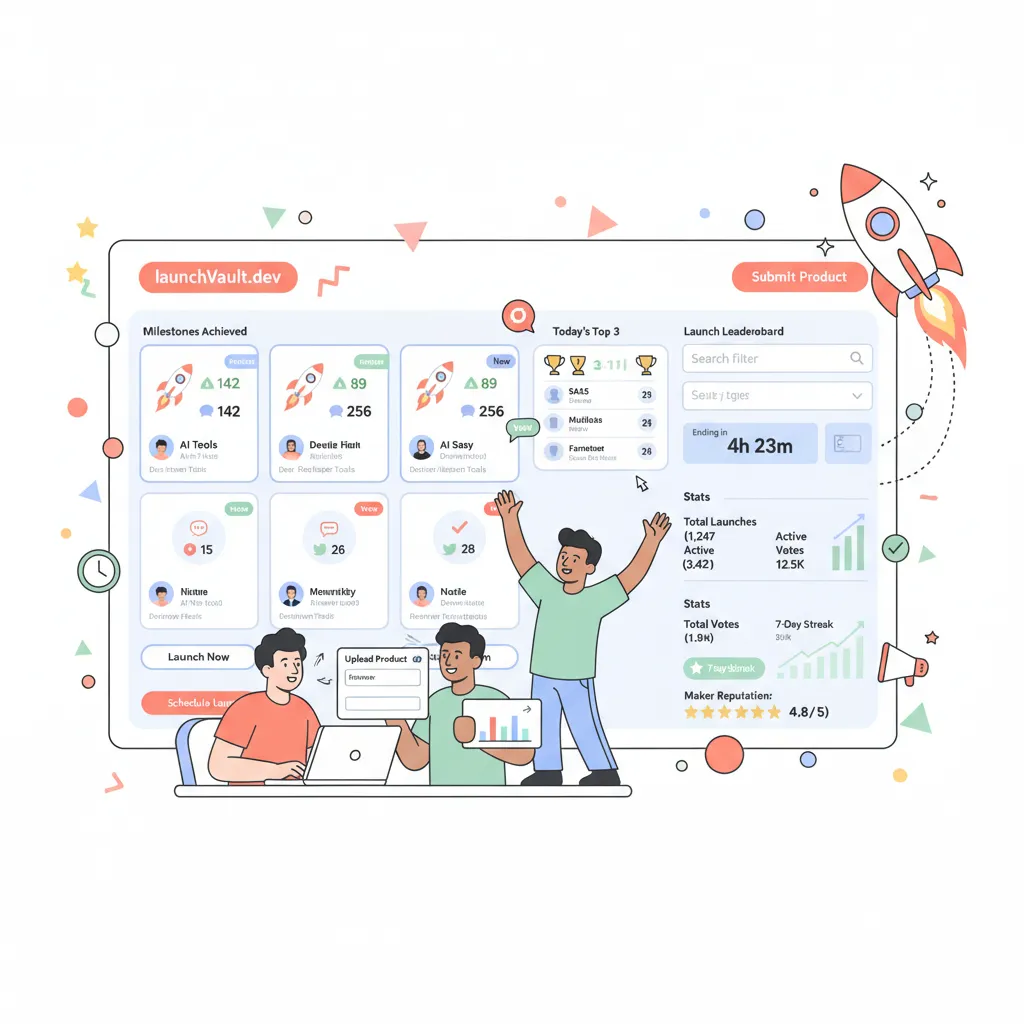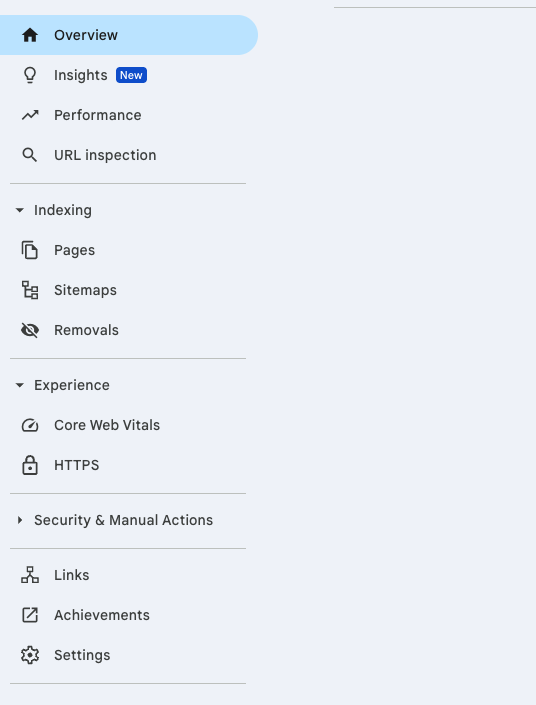How to Check Backlinks in Google Search Console (Complete Guide)
Learn how to check your website's backlinks using Google Search Console for free. Step-by-step guide with actionable insights to analyze your link profile and improve SEO rankings.

How to Check Backlinks in Google Search Console (Complete Guide)
Want to see who's linking to your website? Whether you're tracking the success of your product launch or monitoring your SEO progress, understanding your backlink profile is crucial for growth.
Here's the good news: Google Search Console gives you free access to your complete backlink profile — no paid tools required. In this comprehensive guide, I'll walk you through exactly how to analyze your backlinks and turn that data into actionable insights.
What Are Backlinks and Why They Matter
Backlinks (also called inbound links) are links from other websites pointing to yours. Think of them as digital votes of confidence that tell search engines your content is valuable enough to reference.
Why Backlinks Are Essential for Your Website
SEO Benefits:
- Boost search rankings: Quality backlinks are one of Google's top ranking factors
- Faster indexing: Help search engines discover your content quicker
- Domain authority: Build cumulative credibility over time
Business Benefits:
- Referral traffic: Real visitors clicking through from other sites
- Brand credibility: Establish industry authority and trust
- Networking opportunities: Connect with other creators and businesses
Important Note: Not all backlinks are beneficial. Low-quality or spammy links can actually hurt your SEO performance, which is why monitoring your link profile is essential.
🛠️ Step-by-Step: Checking Backlinks in Google Search Console
Let's dive into the practical steps to access and analyze your backlink data using Google's free tool.
Step 1: Access Google Search Console
- Visit Google Search Console
- Sign in with your Google account
- Select your verified website property
Don't have your site verified yet? You'll need to verify ownership first through HTML file upload, domain provider, or HTML tag verification.
Step 2: Navigate to the Links Report
In the left sidebar, click "Links" to access your comprehensive backlink report. You'll see several key sections:
| Section | What It Shows | Why It Matters |
|---|---|---|
| External Links | Total backlinks to your site | Overall link popularity |
| Top Linked Pages | Your most linked-to content | Identify high-performing content |
| Top Linking Sites | Domains linking to you most | Key relationship opportunities |
| Top Linking Text | Common anchor text phrases | Understand how others describe you |
| Internal Links | How your pages link to each other | Site structure optimization |

Step 3: Analyze Your Top Linked Pages
Click on "Top linked pages" to see which of your pages attract the most backlinks:
Example insights you might discover:
✅ Blog posts perform better than product pages
✅ How-to guides attract more links than announcements
✅ Older content still drives link valueAction Items:
- Create more content similar to your top-linked pages
- Optimize high-potential pages that aren't getting links yet
- Update and promote your best-performing content
Step 4: Review Your Top Linking Sites
Click "Top linking sites" to see which domains link to you most frequently:
What to look for:
- Industry relevance: Are these sites in your niche?
- Site quality: Do they have good domain authority?
- Relationship potential: Could you collaborate further?
Step 5: Export Your Data for Deeper Analysis
Click the Export button (top right) to download your data as:
- Google Sheets (recommended for collaboration)
- Excel/CSV (for advanced analysis)
🧠 Turning Backlink Data Into Action
Having the data is just the first step. Here's how to use these insights strategically:
Identify Content Opportunities
Look for patterns in your top-linked content:
- What topics resonate most with other websites?
- Which content formats (guides, lists, tools) get shared most?
- Are there seasonal trends in your link acquisition?
Build Relationship Strategies
Analyze your top linking sites:
- Reach out to thank sites that link to you frequently
- Explore guest posting opportunities with relevant sites
- Look for broken link opportunities on sites that already link to you
Monitor Link Quality
Watch for potential issues:
- Sudden spikes in low-quality links
- Links from unrelated or spammy sites
- Over-optimization of anchor text
Pro Tip: Set up email alerts in Google Search Console to get notified about significant changes in your link profile.
🚀 Advanced Backlink Analysis Strategies
While Google Search Console is excellent for basic analysis, consider these advanced approaches:
Combine GSC with Other Tools
| Tool | Best For | Cost |
|---|---|---|
| Ahrefs | Comprehensive link analysis, competitor research | Paid |
| SEMrush | Toxic link identification, keyword analysis | Paid |
| Ubersuggest | Basic overview and content ideas | Free tier available |
| Moz Link Explorer | Domain authority insights | Free tier available |
Set Up Regular Monitoring
- Weekly: Check for new high-quality links
- Monthly: Analyze linking patterns and opportunities
- Quarterly: Comprehensive link audit and cleanup
Competitive Analysis
Use the insights from your own link profile to:
- Research what types of content attract links in your niche
- Identify potential linking partners in your industry
- Discover content gaps you could fill
⚠️ Common Mistakes to Avoid
Don't obsess over quantity: 10 high-quality backlinks beat 100 low-quality ones Don't ignore internal linking: Your site structure matters for SEO Don't forget about anchor text diversity: Avoid over-optimization Don't neglect mobile experience: Many referral visitors come from mobile
📊 Understanding the Complete Picture
Remember that Google Search Console shows you links that Google has discovered and considers relevant. This might not include:
- Very new links (can take weeks to appear)
- Links from sites Google doesn't regularly crawl
- Links marked as "nofollow" (though these still provide value)
For a complete picture, combine GSC data with other tools and your own tracking.
🎯 Next Steps: Building on Your Backlink Insights
Once you understand your current backlink profile:
- Create more linkable content based on what's already working
- Reach out to potential partners identified through your analysis
- Optimize underperforming pages that should be attracting more links
- Set up monitoring systems to track your progress over time
📚 Related Resources
Want to dive deeper into backlink strategy? Check out these related guides:
- What Are Backlinks? (Complete SEO Guide 2025) - Master the fundamentals of backlinks and their impact on SEO
- 15+ Free Backlinks to Boost Your Website SEO - Discover actionable strategies to earn quality backlinks without spending money
- How Product Directories Can Get You High-Quality Backlinks - Learn how to leverage product launches for strategic link building
Ready to take your backlink strategy to the next level? Google Search Console gives you the foundation, but the real magic happens when you turn those insights into consistent action. Start with the steps above, and remember: building authority takes time, but every quality backlink moves you closer to your SEO goals.